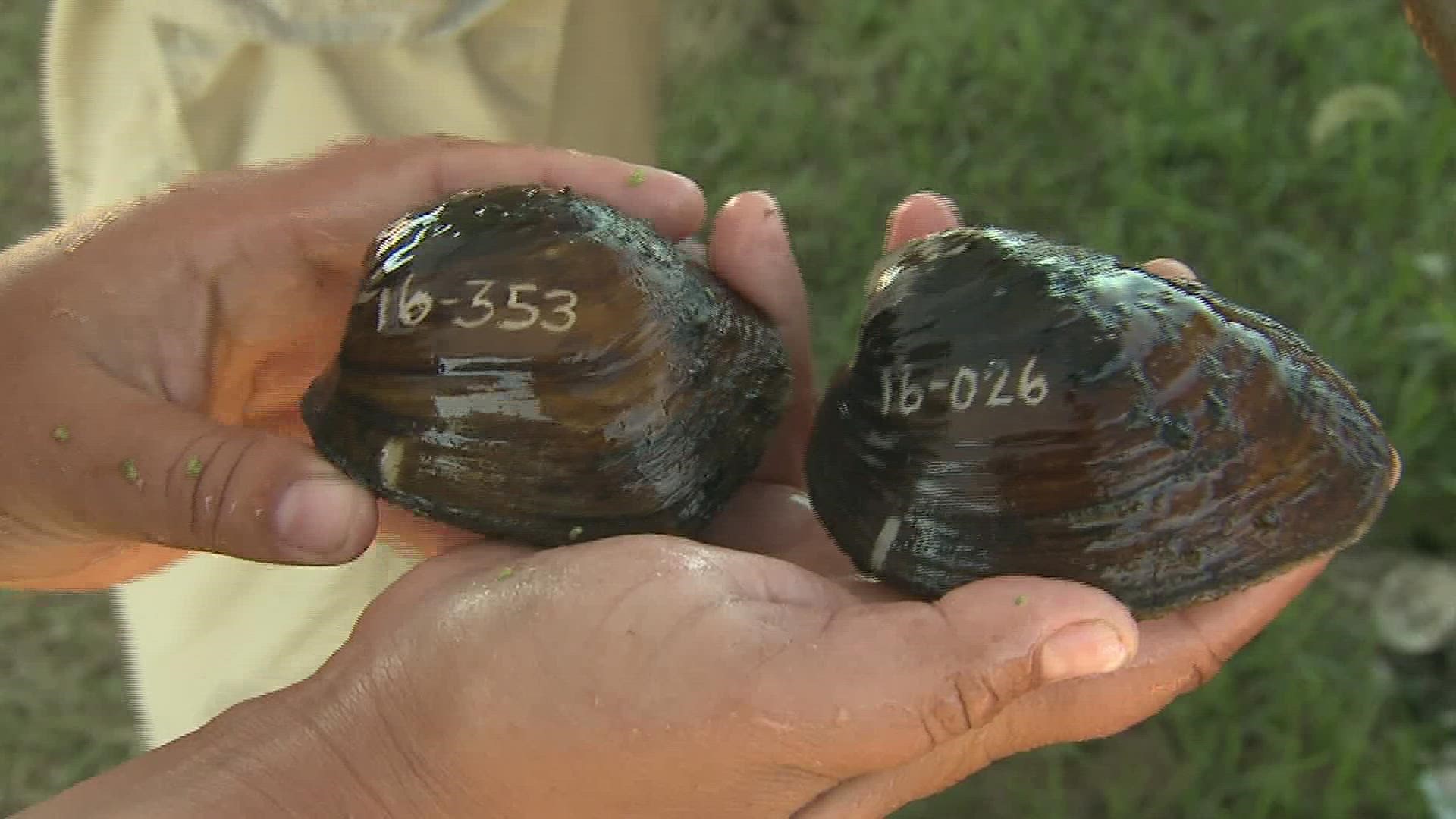MOLINE, Ill. — For two and a half months in 2016, wildlife crews relocated thousands of mussels that were in the direct impact zone of where the new I-74 bridge piers would eventually be built.
"Our office had been working with the DOT (Department of Transportation) for a number of years before that, probably 10 or 15 years before that," said Fish and Wildlife biologist Kristen Lundh.
She said they began to survey the mussel resource in 2014.
"Based on the surveys, they'd estimated over a million mussels were in the footprint of the new bridge, and then under the old bridge," Lundh said. "Within those mussels were three federally endangered mussels and some state listed mussels. So coordination included, what could we do through the project to avoid and minimize impacts to those federally and state listed species?"
A team of commercial divers retrieved the mussels before they were sorted and tagged. Lundh said they initially relocated 140,000 mussels, and found 32 different species.
"That's a pretty, pretty high diversity for the Mississippi River," Lundh said. "As a mussel bed is created and mussels start to reproduce and form habitat that area is an important food source for other species, things like muskrats and different kinds of fish eat mussels, but they're also filter feeds. They filter some of the contaminants and stuff out of the water."
The mussels were moved into existing mussel beds in the Mississippi River. Having that existing bed with existing food sources and host fish species means there's not a lot of mortality, Lundh said. Overall, she said the project has been successful.
Since then, she said Fish and Wildlife and consultants have been coming out annually to study the relocated mussels. Once the bridge project is complete, she said that might change to every three years.
"We have research projects that are going on to help us learn more about, you know, how do we impact mussels when they're relocated, and maybe best management practices that we can include in future projects," Lundh said. "We got a lot of really important mussel education out of the project."
Wildlife crews also recently returned to relocate another 34,000 mussels from underneath the old bridge in preparation for when its demolished next year. However, one of the old bridge piers will remain underwater for a group of mussels.
"Because it has a population of spectaclecase mussel, which is federally listed, that bridge is actually going to be retained. And some mussels were actually moved from the other bridge piers to that bridge pier," Lundh said. "The DOT is going to be including best management practices to actually make sure that pieces of the bridge don't fall in the water into the mussels that are left."
Lundh is also hoping the same species of mussels will eventually recolonize the old mussel beds underneath the new bridge.
"The mussels that we moved won't, but the fish species that are hosts for the baby mussels will continue to use these areas underneath the new 74 bridge, and hopefully complete the cycle so that we'll have new mussel beds that will recolonize under the bridge," she said.
According to Lundh, the mussel relocation project costs around $2 million out of the bridge project's $1 billion budget.

